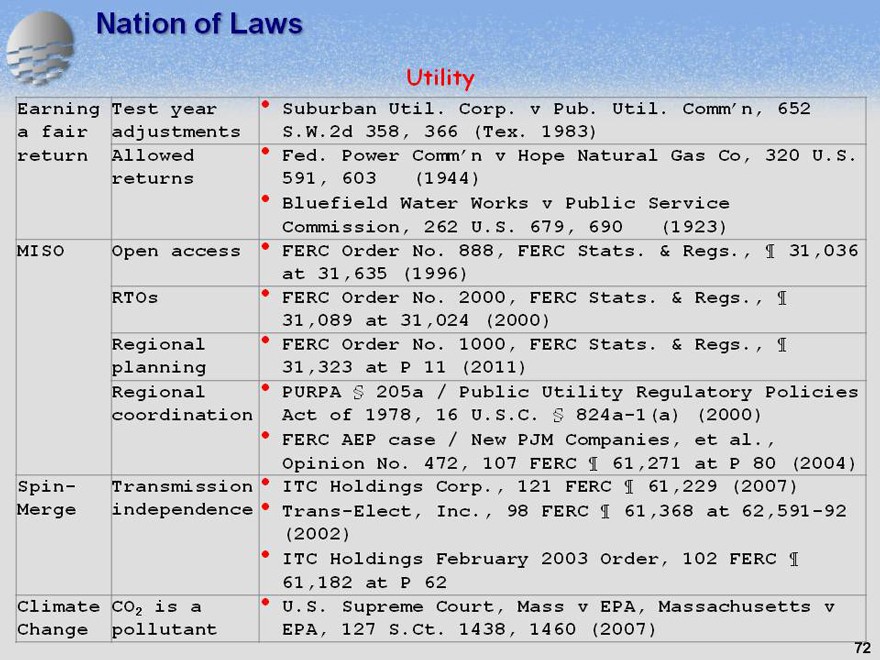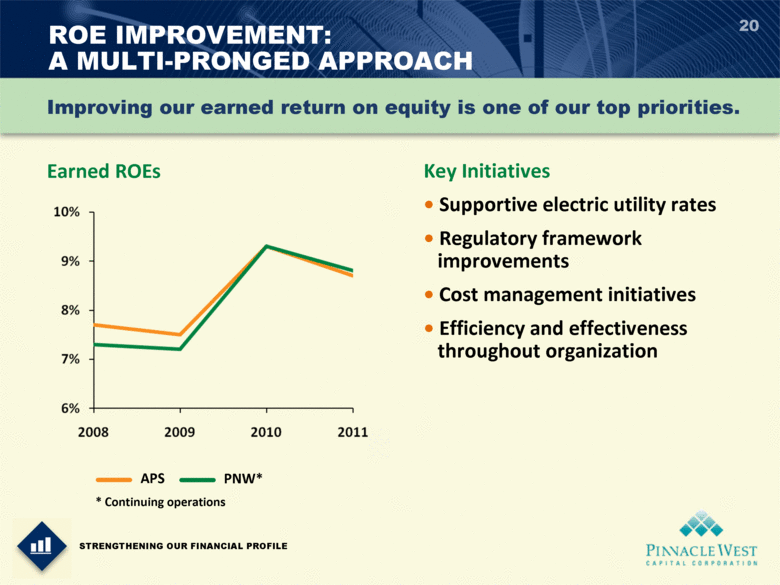FERC Announces New Approach for Determining the Return on Equity for Electric Utilities
Post on: 6 Апрель, 2015 No Comment

FERC Announces New Approach for Determining the Return on Equity for Electric Utilities
On June 19, 2014, the Federal Energy Regulatory Commission (FERC) issued Opinion No. 531. an order affirming in part and reversing in part an administrative law judges August 2013 Initial Decision concerning a complaint filed pursuant to section 206 of the Federal Power Act (FPA) challenging the New England Transmission Owners base return on equity (ROE).
In Opinion No. 531, FERC announced a new, two-step, constant growth discounted cash flow (DCF) approach for determining the base ROE for public utilities, and eliminated its existing practice of making post-hearing adjustments to ROEs based on changes in U.S. Treasury bond yields. Overall, the new approach is expected to produce a narrower zone of reasonableness, with ROEs (including incentives) capped at the upper end. As applied to the New England Transmission Owners, the new methodology produced a higher ROE than the administrative law judge had proposed in the Initial Decision (see Table 1 below). Opinion No. 531 and related orders in five other dockets should help eliminate much of the regulatory uncertainty that has surrounded electric utility ROEs in recent years by helping to clear the logjam of pending ROE dockets.
FERCs New Methodology for Determining Electric Utility ROEs
For over thirty years, FERC has based ROEs on the rate of return required by investors to invest in a company. FERC has relied primarily on the DCF model to provide an estimate of investors required rate of return. The underlying premise of the DCF model is that an investment in common stock is worth the present value of the infinite stream of dividends discounted at a market rate commensurate with the investments risk.
FERC has historically applied different DCF methodologies in determining the ROEs for electric utilities and natural gas and oil pipelines. The most fundamental difference between the two DCF methodologies is that the methodology traditionally applied to natural gas and oil pipelines (i.e.. the two-step DCF methodology) considers long-term growth projections in estimating a companys cost of equity, whereas the methodology traditionally applied to electric utilities (i.e.. the one-step DCF methodology) considers only short-term growth projections.
In Opinion No. 531, FERC concluded that it is now appropriate to use the same DCF methodology for the electric industry as it has used for the natural gas and oil pipeline industriesi.e.. the two-step DCF methodology. FERC also made a tentative finding that the required long-term growth projection should be based on projected long-term growth in gross domestic product (GDP), but established a paper hearing to permit participants to present evidence on that issue.
FERC also ended its prior practice of making post-hearing adjustments to ROE based on changes in U.S. Treasury bond yields during the proceeding, in light of its shift to the two-step DCF methodology and evidence that U.S. Treasury bond yields are not necessarily a reliable one-for-one indicator of changes in investor-required returns. In a separate order also issued on June 19, 2014, FERC reversed a prior order that had reduced Southern California Edison Companys base ROE by 101 basis points based on post-hearing changes to average U.S. Treasury bond yields.

Application of the New Approach to the New England Transmission Owners
Applying its new methodology to the New England Transmission Owners, FERC found that, based on the record, including the unusual capital market conditions, the just and reasonable base ROE for the New England Transmission Owners should be set halfway between the midpoint of the zone of reasonableness and the top of the zone of reasonableness. Thus, the base ROE, assuming a long-term growth rate based on GDP and subject to the outcome of the paper hearing on the long-term growth rate, would be 10.57 percent, halfway between the 9.39 percent midpoint of the zone of reasonableness and the 11.74 percent top of that zone. Table 1 summarizes the positions of the parties and the outcome:
Table 1
New England Transmission Owners Base ROE Benchmarks in Docket No. EL11-66














